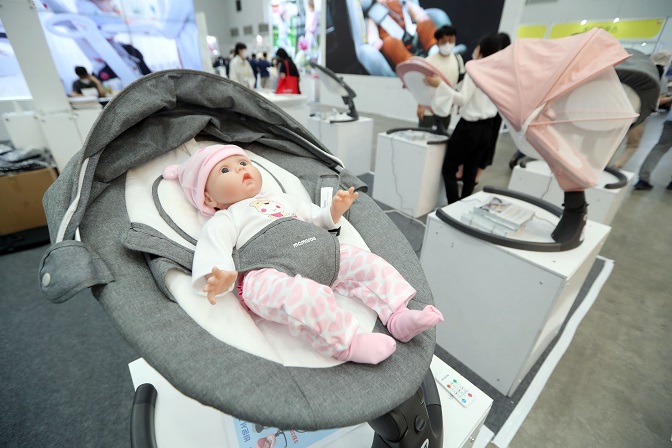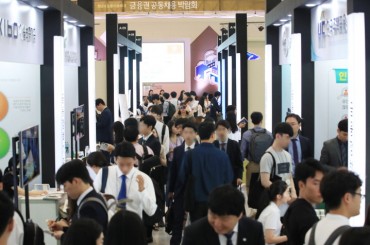
Baby products are displayed at an exhibition in Daegu, 237 kilometers south of Seoul, in this file photo taken May 12, 2022. (Yonhap)
SEOUL, March 27 (Korea Bizwire) — The share of firstborns among total births is on the rise, indicating that there are fewer South Korean women giving birth to more than one child.
About 56,000 newborn babies last year were firstborns, accounting for 62.7 percent of all newborn children. It is the highest rate since 1981, according to data from Statistics Korea.
The number of firstborns jumped by 5.5 percent between 2020 and 2021. It is the first jump in seven years after the percentage rose by 1.4 percent in 2015.
The number of secondborns dropped by 16.7 percent to 76,000. The number of thirdborns and higher dropped by 20.9 percent to 17,000.
Last year, the overall number of newborn babies dropped by 4.4 percent from the previous year, indicating that the increasing number of firstborns can largely be attributed to the lack of households giving birth to more than one child.
The ratio of secondborns dropped from 35 percent to 30.5 percent, and that of thirdborns and higher dropped from 8.2 percent to 6.8 percent over the same period.
The ratio of firstborns has been on a constant increase for 12 years since 2011. The ratio of secondborns and thirdborns, in contrast, has been decreasing since 2015 and 2018 respectively.
With couples choosing to have children at older ages, and with the financial burden that comes with parenthood continuing to increase, most are choosing to only have one child.
Mothers gave birth to firstborns at an average age of 32.6 years as of 2021, up by 0.3 years since the previous year. The average age has been climbing ever since 1993 (26.2 years).
The later the first child is born, the more difficult it is for parents to give birth to more children.
The family income and expenditure survey conducted in the fourth quarter of last year showed that households with more than two children spend up to 60.4 percent of their monthly income, which was more than those with only one child (51.5 percent).
H. M. Kang (hmkang@koreabizwire.com)






